#ganges river dolphin
Text

Ganges river dolphin
By: Unknown photographer
From: WWF Threatened Animals
1986
53 notes
·
View notes
Photo

Ganges River dolphin Platanista gangetica
Observed by fabio_olmos
#Platanista gangetica#Ganges River dolphin#Cetacea#Platanistidae#cetacean#dolphin#Asia#India#Madhya Pradesh
1 note
·
View note
Text
Round 1 Match 19
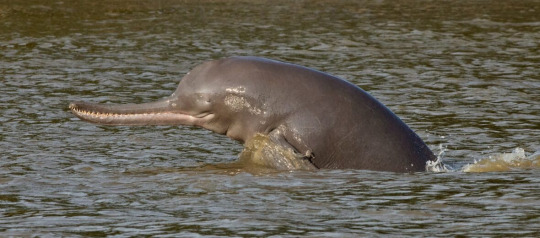

Ganges River Dolphin: "most visually frightening dolphin, absolutely horrific"
Solenodon: "silly snout, tiny eyes, VENEMOUS?, weird and stinky"
51 notes
·
View notes
Text

Ganges river dolphin(Plataista gangetica) and its probable great ancestor Pakicetus.
47 notes
·
View notes
Photo

Ganges / Indus river dolphin, watercolour on recycled book page.
5 notes
·
View notes
Photo

huh, i wonder how these two got together
17 notes
·
View notes
Text
Discarded Fishing Nets Threaten Ganga Wildlife: Study
Discarded Fishing Nets Threaten Ganga Wildlife: Study
<!-- -->
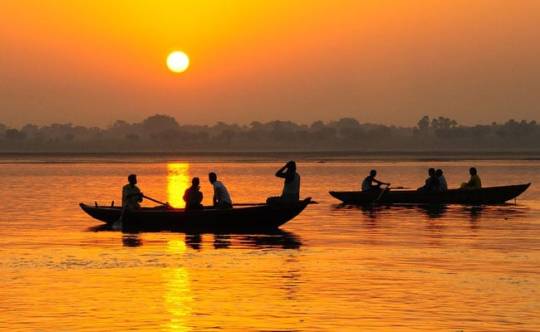
The researchers noted that fishing nets, made of plastic were the common type of gear. (Representational)
New Delhi:
Plastic pollution from discarded fishing gear in the Ganga River poses a threat to wildlife such as the critically endangered three-striped roofed turtle and the endangered Ganga river dolphin, according to an international team, including researchers from the…
View On WordPress
0 notes
Photo
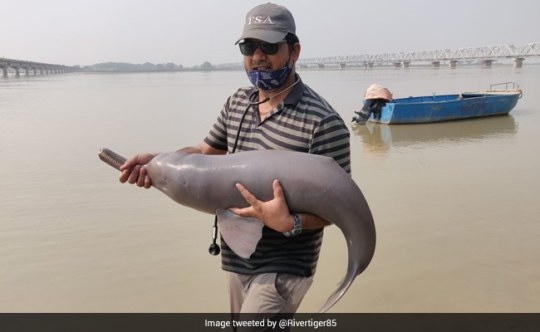
देखिए, कैसे बाराबंकी नहर में फंसे एक अजीबोगरीब डॉल्फिन को बचाया गया, Video देखिए, कैसे बाराबंकी नहर में फंसे एक अजीबोगरीब डॉल्फिन को बचाया गया, Video बाराबंकी: उत्तर प्रदेश में कल एक गंगा नदी के बड़े ही अजीबोगरीब डॉल्फिन को बचा लिया गया, वह रास्ता भटक गया था, जिसकी वजह से वह बाराबंकी नहर में आ गिरा.
0 notes
Photo

देखिए, कैसे बाराबंकी नहर में फंसे एक अजीबोगरीब डॉल्फिन को बचाया गया, Video देखिए, कैसे बाराबंकी नहर में फंसे एक अजीबोगरीब डॉल्फिन को बचाया गया, Video बाराबंकी: उत्तर प्रदेश में कल एक गंगा नदी के बड़े ही अजीबोगरीब डॉल्फिन को बचा लिया गया, वह रास्ता भटक गया था, जिसकी वजह से वह बाराबंकी नहर में आ गिरा.
0 notes
Photo

How A Dolphin, Stranded In Barabanki Canal, Was Rescued A Ganges river dolphin was rescued from a canal and released into the Ghagra river. An elusive Ganges river dolphin was rescued in Uttar Pradesh yesterday after it lost its way and became stranded in a canal.
0 notes
Photo

Ganges river dolphin. Watercolour on recycled book page.
3 notes
·
View notes
Photo


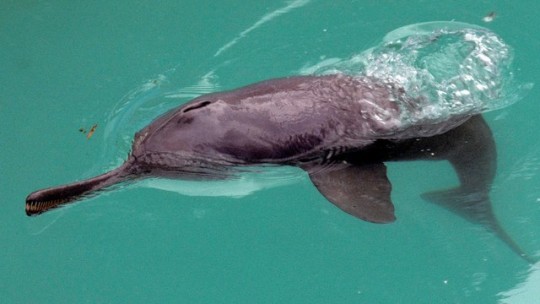


Endangered Cetaceans, part 10
South Asian river dolphin, Platanista gangetica
Arguably the strangest-looking of all cetaceans, this "dolphin" (quotation marks to be explained) is a completely unique animal within the toothed whale order.
You see (slightly off-topic taxonomy lecture ahead), we say killer whales and pilot whales are dolphins, because they are in the dolphin family. To be specific, the Oceanic dolphin family (Delphinidae - note the suffix "dae" means "family" in taxonomy).
Porpoises, narwhals and belugas have two separate families within the Oceanic dolphin superfamily (Delphinoidea). They are close relatives of the Oceanic dolphins, but not really there. No one would call a beluga or porpoise a dolphin.
Then there are the river dolphins. The Baiji, the South Asian, and the South American river dolphins. They are all completely unique and separate from each other, from dolphins, and from other toothed whales. All three have their own superfamily.
But still, they're obviously dolphins. No one is going to start calling them river whales. So I just wanted to clear out that "dolphin" is just a name, and has nothing to do with relationship or taxonomic classification.
It's simply a description of a small, typically (but not always, like with the Risso's and Irrawaddy) long-beaked toothed cetacean. So killer whales, pilot whales and the rest are whales, not dolphins. Being in Delphindae has nothing to do with being a dolphin. It’s just a name that describes size and/or appearance, and even there is very inconsistent and means nothing. /End rant

The South Asian river dolphin is not just strange on the outside, but also on the inside. Just look at this skull!
They have the tiniest and most useless eyes of all cetaceans, even lacking a functional lens. They can pretty much tell night from day, and that's it, which means they are entirely dependent on their sonar. Also unique among cetaceans, they swim on their sides, for some reason.
The teeth aren't always that monstrous, though. They start out thin and long in juveniles, then become square, flat disks as they mature. Freaky.
With their huge, bizarre teeth, tiny eyes and pinkish skin, they could kind of be called the "naked mole rat" of the cetaceans.

Considered the same species, the two subspecies (P. g. gangetica and P. g. minor) are spread across two rivers, the main subspecies in the Ganges (blue), and P. g. minor in the Indus river (turquoise).
Both subspecies are considered endangered, the species as a whole since 2004, the Ganges subspecies since 1996, and the Indus subspecies since 1986.
This species is the sole living representative of its family, and therefore its extinction would mean not just the loss of a single species, but loss of an entire mammalian family regarded as a sister taxon to all other cetaceans.
The Ganges river dolphin is estimated at 3500 animals, spread across the Ganges river in India, Bangladesh, and even Nepal, while the Indus river dolphin is estimated at 1200-1800 animals, and is only found in Pakistan.
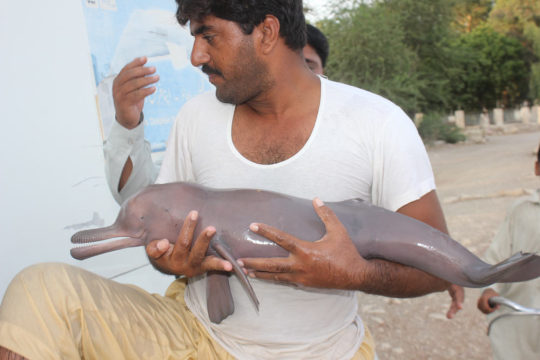
The main threats for the species are dams, pollution, deliberate killing, and as bycatch in fishing gear.
Dams create physical barriers, isolating dolphin populations from each other, and greatly disturb the ecosystem, making it harder for the dolphins to find food.
More dams and barrages are either under construction or in advanced planning stages. Water diversion and use in the South Asian subcontinent, including intra- and inter-basin transfers, will continue to be driven principally by the escalating demands for water from agriculture, industry, and municipalities.
There are 400 000 000 people (four hundred million) living around and directly depending on the Ganges river. That's far more than the entire population of the United States, and it's nearly half of all of India.
There are simply too many people, demanding too much water and infrastructure, for this dolphin to realistically survive far into the 21st century.
While animals all over the planet are affected, this dolphin finds itself particularly unlucky, as did the Baiji, in that it lives in the most densely human-populated area in the world, in a river which humans both depend on for survival, and at the same time treat as a collective garbage dump.
Everything is thrown into the river, including human feces and dead bodies, and of course thousands of tons of plastic.

Because of this dense human population, gillnets(!) are also a major threat to the species' survival. Easy, cheap and lazy fishing, the dolphin (and everything else that swims into the net) gets caught, can't get air, and dies.
Not a major threat and it is decreasing, but still worth mentioning, is human consumption.
Dolphins are hunted by tribal people in the upper Brahmaputra for their meat and by fishermen in the middle reaches of the Ganges for their oil, which is used as a fish attractant.
Indus river dolphins were live-captured and taken into human care in small numbers in the late 1960s. The goal was research, rather than training or display, though no doubt a zoo or aquarium would have wanted to display such a unique and rare animal, if they managed to get them to survive.
This was carried out by Steinhart Aquarium in San Francisco, and Berne University in Switzerland. The three Steinhart dolphins survived for just over a month, while Berne University had two of their seven dolphins surviving 8-9 years.
This, again, stretched from the late 1960s until the death of the last individual, in early 1978. This period in cetacean husbandry cannot be remotely compared to 2010s standards, it is lightyears apart.
There is no reason animals caught today would not survive far better, especially since the people actually carrying out the capture efforts had before only hunted to kill, and did not know how to capture them safely and without causing them unnecessary stress.

They could also, today, be held in a facility more similar to Duisburg Zoo's river dolphin habitat, which currently houses Baby, their 44 year old Amazon river dolphin.
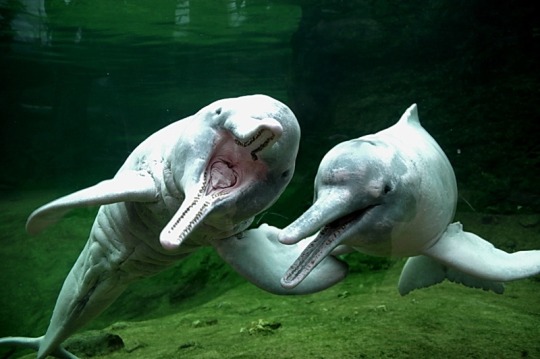
Any captive breeding efforts will have to happen outside of India however, since the country, half a decade ago decided to ban all human use of live dolphins, meaning, they cannot be held in human care in India.
Of all the problems that country has, and they chose to focus on banning zoological dolphins. The mind-boggling regressive worldview of the anti-animal movement strikes again. At least in Pakistan and Bangladesh, there are no such silly, anti-science laws.
Unless this species can be bred large-scale in human care, and/or unless the Ganges (and Indus) river is cleaned up and human pressure is largely put off the river very soon, or at the very least, a large part of the river is made safe from large-scale human impact, this species will not survive.
China cleaned up Yangtze too late for the Baiji, but they might still save the Yangtze finless porpoise. India meanwhile shows little promise in being able to fix this, as they only continue to grow, and use and abuse more and more of their fragile environment.
South Asian river dolphin - IUCN
https://en.wikipedia.org/wiki/Platanistidae
12 notes
·
View notes
Link
Only six dolphins were spotted in the Karnali river during a recent inspection by the Bardiya National Park (BNP), which has raised concerns about the existence of the charismatic species, whose number in the 1980s was estimated to be a little less than 100, with the group of about 20 in the Karnali.
Conservationists are highly alarmed as not even a single dolphin was spotted in the Geruwa river, which starts few kilometres downstream from Chisapani after the Karnali river bifurcates. According to officials, the Ganges river dolphins (Platanista gangetica) were earlier found in Manaughat, Golaghat, Kothiyaghat and Geruwa river. Chief Conservation Officer of the BNP Ramesh Kumar Thapa said two dolphins have been found dead over the last three years.
“The number of dolphins is declining due to haphazard fishing, habitat loss and other reasons,” said Thapa.
Conservationists said the decline in number of dolphins started the Geruwa river changed its course eight years ago. Construction of Girijapuri dam is another reason for the decline dolphin population, they say. Local conservationist Ram Bahadur Shahi said dolphins cannot return to their original habitat after they are swept down the dam. “The concerned authorities should pay attention to dolphin conservation,” said Shahi.
7 notes
·
View notes